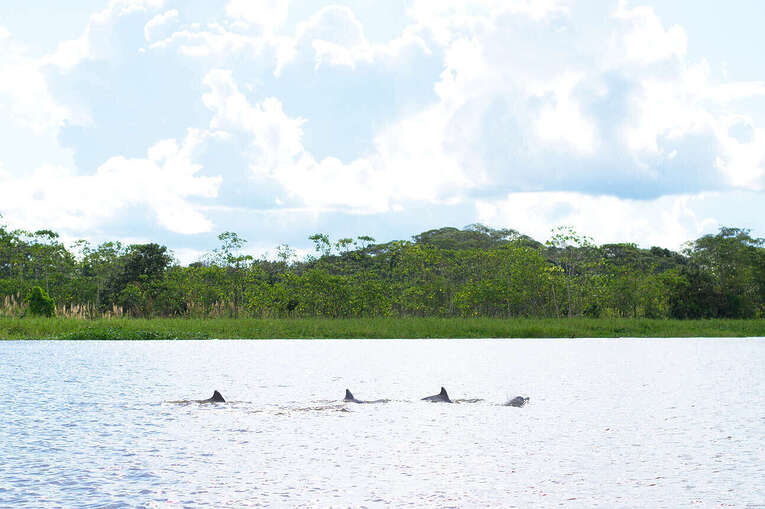Pink Amazonian dolphins are one of those mythical animals found only in a handful of Latin American countries, and (once again) Colombia is one of the lucky destinations that can boast several species of river dolphin!
Seeing river dolphins in Colombia is one of those unique travel experiences you can have if you take the trouble to visit the vast expanses of the eastern plains or the Colombian Amazon jungle.
Pink dolphins can be seen in much of south-eastern Colombia, and contrary to what you might think, river dolphins are only to be found in the Amazon!
Disclaimer: we apologize in advance for any grammatical or syntactic errors, as our native language is not English (we're a Colombian-French couple), so we hope you'll forgive us and still enjoy the information we share with you! Please note that all the information on our blog is based on our own experience, and is checked and updated regularly.
Contents
Related posts
We were fed up with paying fees abroad
So for several years now, we’ve been using a free bank debit card specially designed for travelers, and we don’t pay any more fees abroad – no more!
Exclusive 5% Off Discount For you
Best Travel insurance for Colombia
Our partner offers the best rates and a 5% discount for our blog readers! (regardless of travel dates)
Pink river dolphins in Colombia
Information on Amazon river dolphins
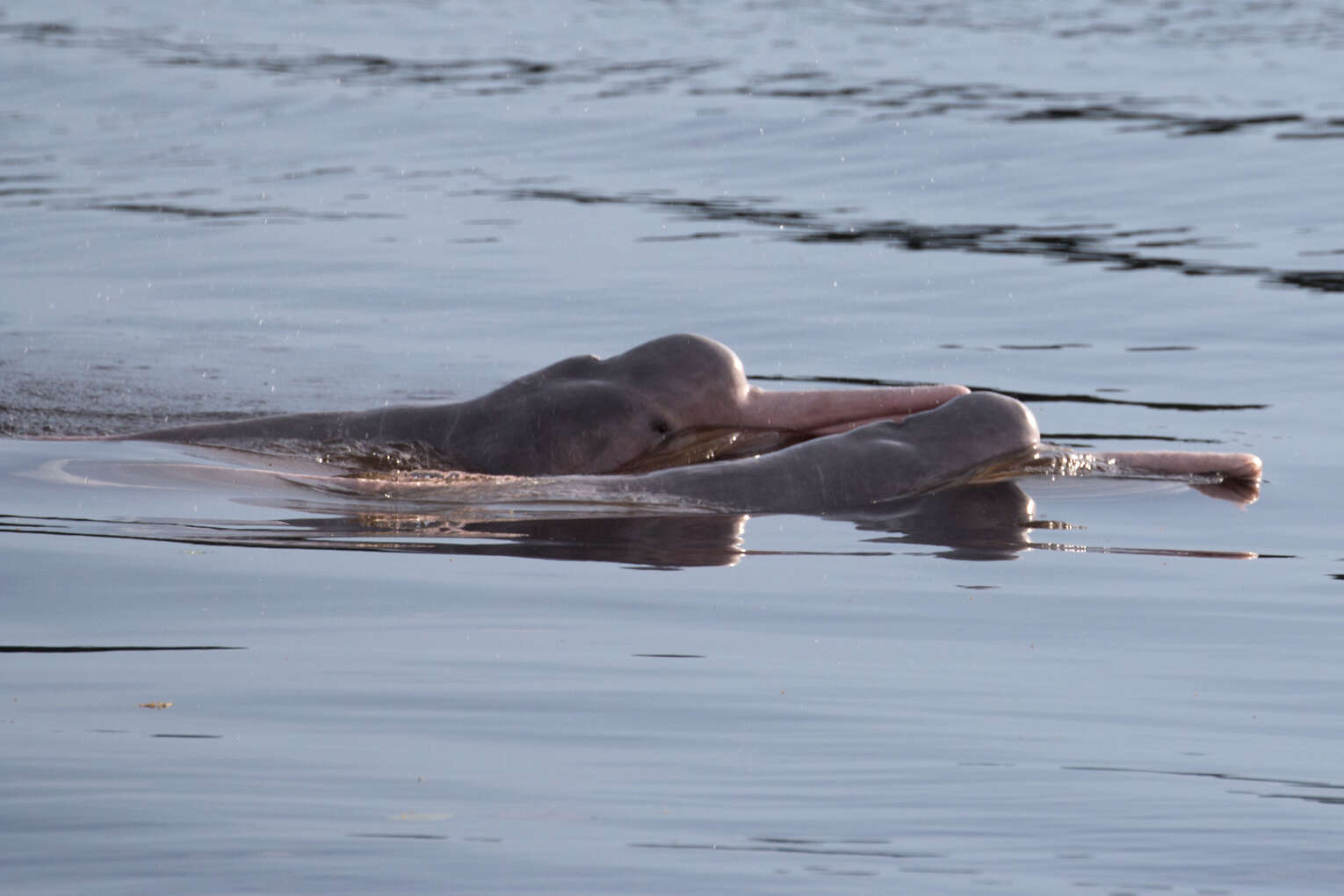
Dancing elegantly in Colombia’s fresh waters, river dolphins are endemic to the Orinoquia and Amazon regions. Their sightings are limited to these regions. They generally travel in groups, stalking schools of fish to feed.
The natives of both regions have given it various names , adding to its mysterious and captivating aura: the Puinave call it “Muña”, the Huitoto nickname it “Jíamana”, the Sikuani give it the name “Panabü” and the Tikuna call it “Omacha”. The “settler” communities (in the Colombian sense of the term), meanwhile, recognize it as Bufeo (in Amazonia) or Tonina (in Orinoquia)
They have a gregarious instinct, and can have a “playful attitude”. Sometimes they follow boats by chasing bubbles from their motors, or produce bubbles under boats.
There are two types of river dolphin in Colombia: pink dolphins (which can be gray) and gray dolphins (which can have pink tints). It’s their size that distinguishes them.
The pink river dolphin
Information on amazon river dolphins in Colombia
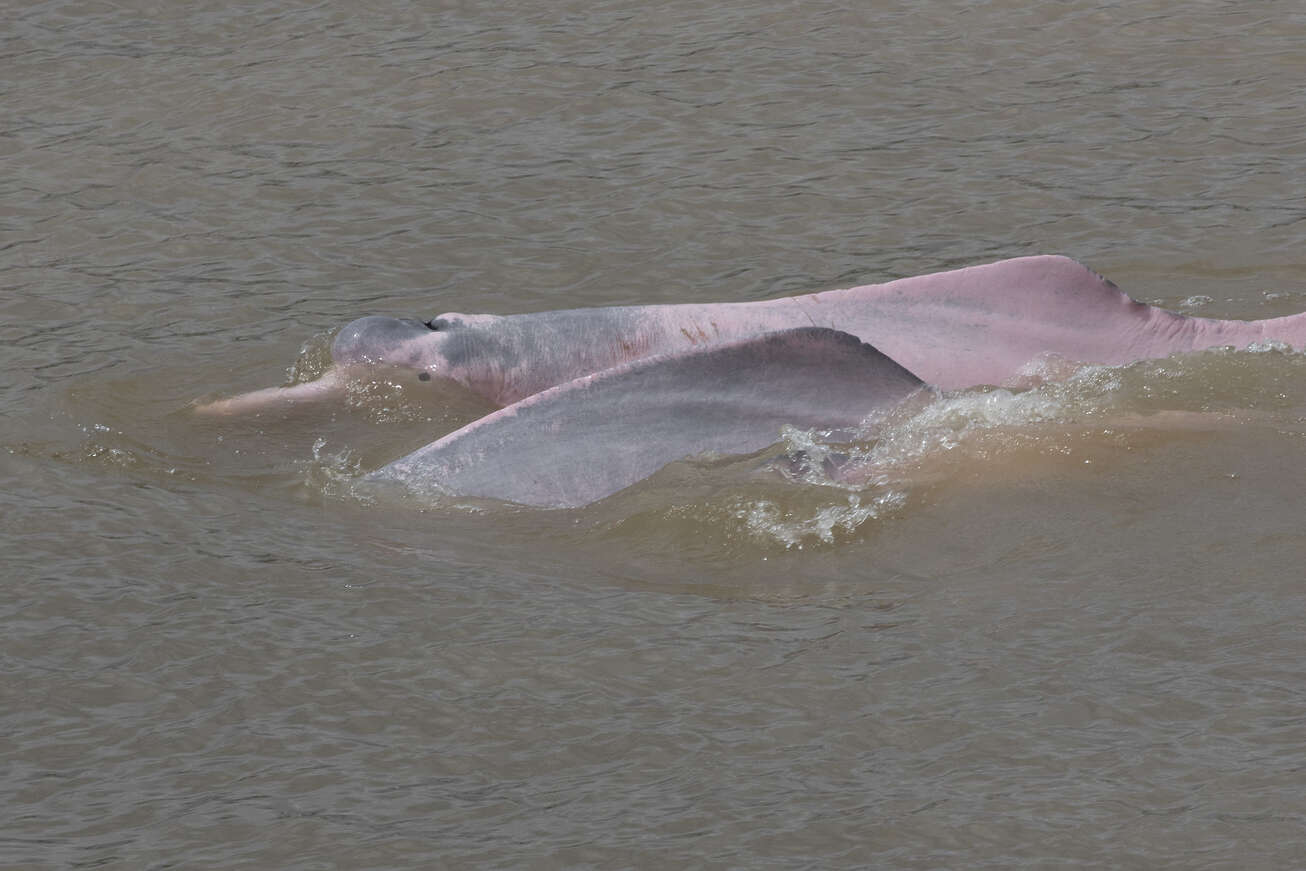
Pink dolphins have distinctive characteristics compared to their marine cousins. Their dorsal fin is less pronounced, or even absent in some cases, and their pink color sets them apart.
However, not all pink dolphins are pink! Some specimens tend to remain gray with just a hint of pink on their bodies. This pink coloration may increase temporarily, depending on the dolphin’s activity (blood circulation).
The pink dolphin is the world’s largest river dolphin, up to 2.75 m long and weighing up to 220 kg.
Habitat: the pink dolphin is widely distributed in the Amazon and Orinoco river basins and most of their tributaries, but is limited at source to streams and waterfalls, large rivers, tributaries, lagoons, confluences and flooded forests.
The gray river dolphin
Where to see amazon river dolphins in Colombia
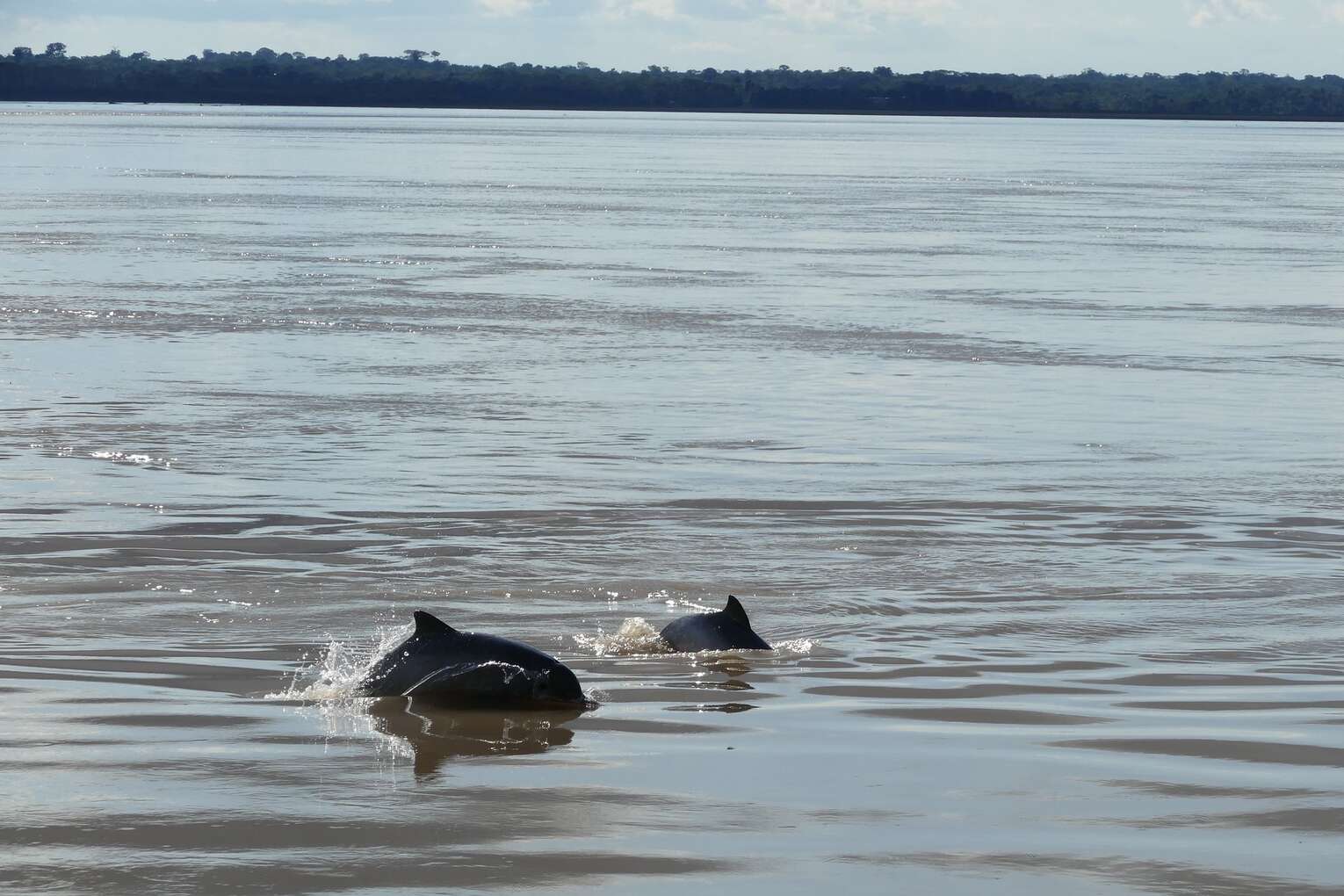
The gray dolphin is one of the smallest dolphin species in the world. It measures around 1.5 meters in length at most and weighs barely 50 kilograms. It has a short snout, large eyes and small pectoral fins.
Coloration varies geographically, but the general trend is dark gray to pearl gray on the back and pale or pinkish on the belly. There are often one or two gray projections towards the ventral region and sometimes a white spot at the tip of the snout and dorsal fin.
Experts consider these dolphins to be one of the most social species, living in large groups of up to 30 individuals. The most common groups are mothers and calves.
Habitat: This species is only found in the Amazon basin in Colombia, Ecuador, Peru and Brazil. It is found in the Amazon, Caquetá, Apaporis and Putumayo rivers.
During the rainy season, gray dolphins frequent lake systems, but do not enter the flooded forest. During the dry season, they leave the lakes and stay in the main rivers.
Where to see pink river dolphins in Colombia?
How to see Amazon river dolphins
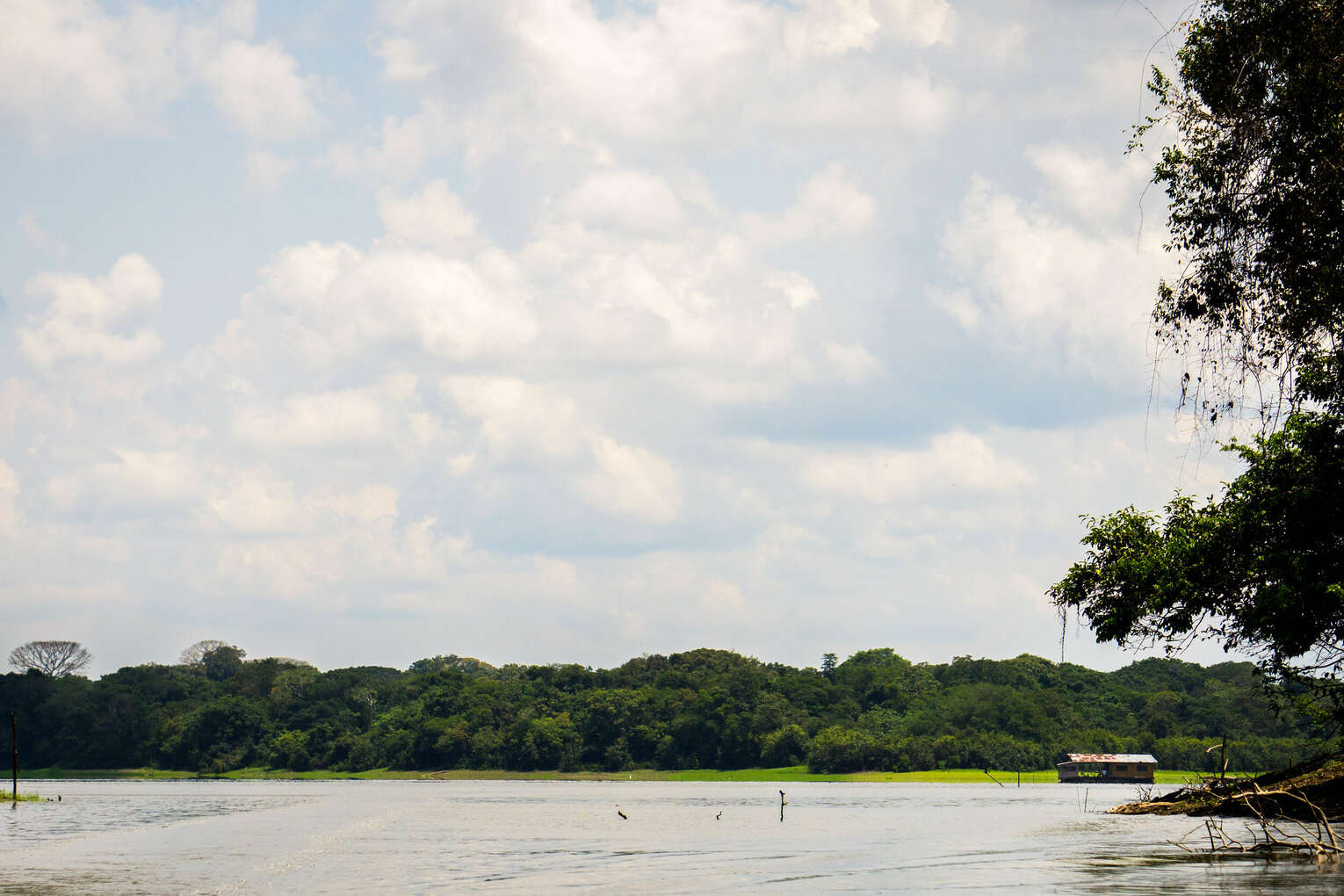
As you can see, it’s possible to observe river dolphins in Colombia in their natural habitat. These mammals are found in large rivers, lagoons and flooded forest in the south-east of the country, between the Amazon and Orinoquia.
Although there’s no guarantee of seeing pink dolphins on an outing, certain places and times of year increase the chances of sightings. Your guide or agency should be able to provide you with this information.
It’s generally easier to observe them during low-water periods, as they concentrate at or near the confluence of the region’s rivers in the main river. But during periods of high water, groups of pink dolphins are larger.
Where to see pink river dolphins in the Amazon
The best place to see pink dolphins in the Amazon is Puerto Nariño and Lake Tarapoto, near Leticia on the Amazon River in the far south of Colombia.
In the Colombian Amazon, pink dolphins inhabit the rivers Caquetá, Apaporis, Mirití Paraná, Cahuinarí, Putumayo, Igará Paraná, Cotué, and of course the Amazon River. They can also be found in many connected lakes, such as Tarapoto and La Paya.
Where to see pink river dolphins in Orinoquia
The best-known tourist site for seeing pink dolphins in Orinoquia is the Meta River, particularly around the town of Puerto Gaitan, where agencies can take you easily from Villavicencio.
For our part, we were able to observe Amazonian pink dolphins from San José del Guaviare.
Generally speaking, in the Orinoquia region, pink dolphins can be found in the Meta, Guayabero, Yucao, Manacacías, Tillavá, Planas, Vichada, Tomo, Guaviare, Inírida, Orinoco, Bita, Arauca, Cravo Norte and Casanare rivers and in the Tuparro lakes.
Risks of watching Amazon river dolphins
Taking action for responsible tourism
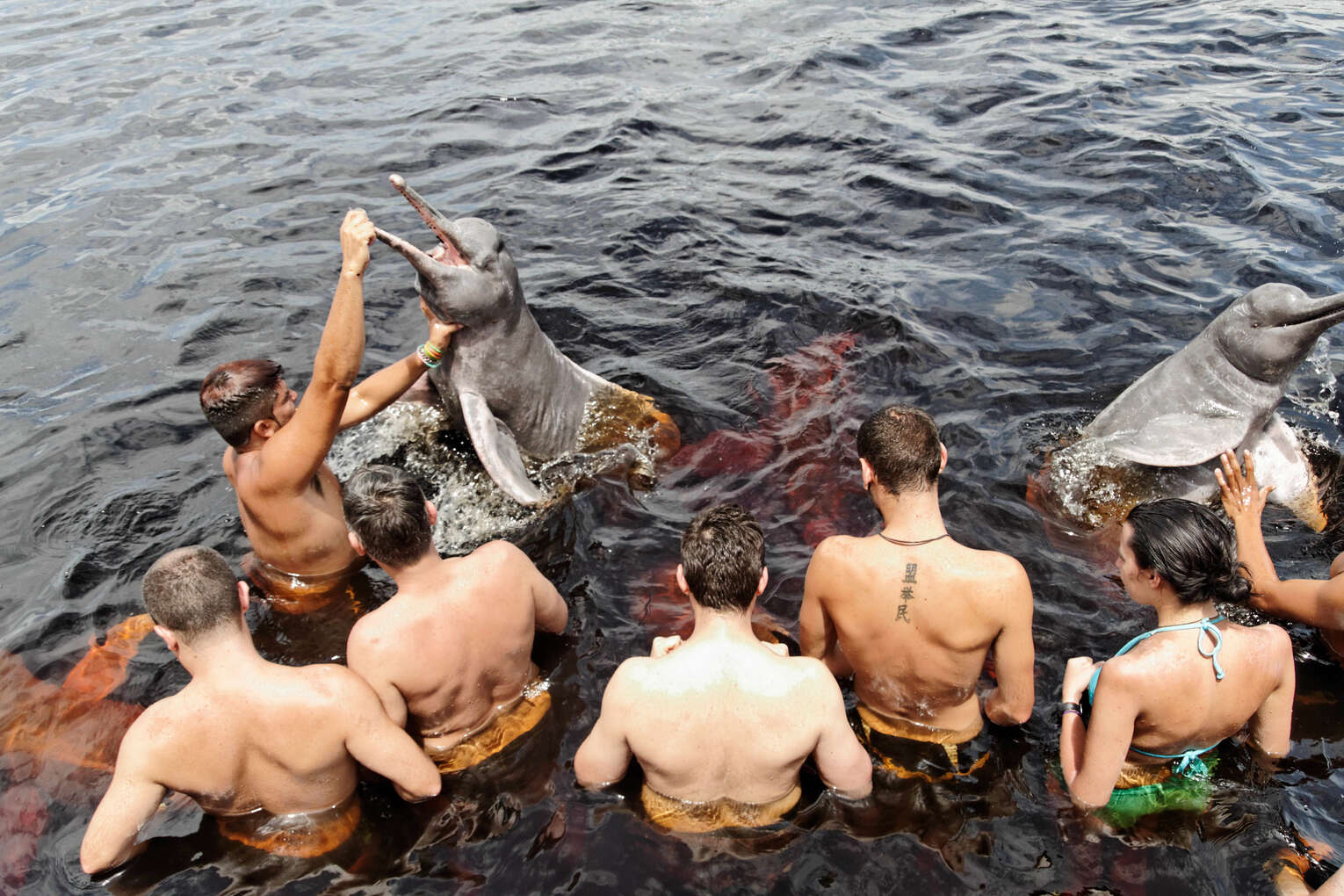
For local fishermen, taking tourists to see river dolphins in Colombia is a financially interesting activity and a good alternative job. A fisherman can earn more money by taking tourists to see the dolphins than by fishing, as fishing is becoming increasingly difficult.
But dolphin-watching can pose a threat to the conservation of these species, because if not carried out properly, it can affect the mammals.
We therefore advise you to always use responsible, environmentally-friendly tour operators.
Tips for responsible observation of pink river dolphins:
To avoid disturbing the animals, precautions must be taken by guides and their boats.
- Do not feed the dolphins. This is the first thing you should ask your guide. If you do, you may want to avoid this service provider!
- Keep boat trajectories parallel to the animals’ movements, without interfering with their escape routes.
- Reduce boat speed as you approach the observation zone
- Leaving the boat’s engine running during observation allows the animals to locate the boats and avoid collisions.
- Do not approach dolphins when they are mating, giving birth or with newborns.
Endangered species
The International Union for Conservation of Nature (IUCN) classifies river dolphins as endangered due to factors such as conflicts with fishermen and illegal mining in Amazonian rivers.
Fishermen are among the main tormentors of the pink dolphin in Colombia. According to the Humbolt Foundation, fishermen regard them as potential competitors and do not hesitate to trap, hunt or poison them.
Grey dolphins, while not considered a competitor by fishermen, are threatened by the presence of nets in small tributaries and lagoon systems.
Swimming with Amazon pink river dolphins
Precautions for seeing river dolphins in Colombia
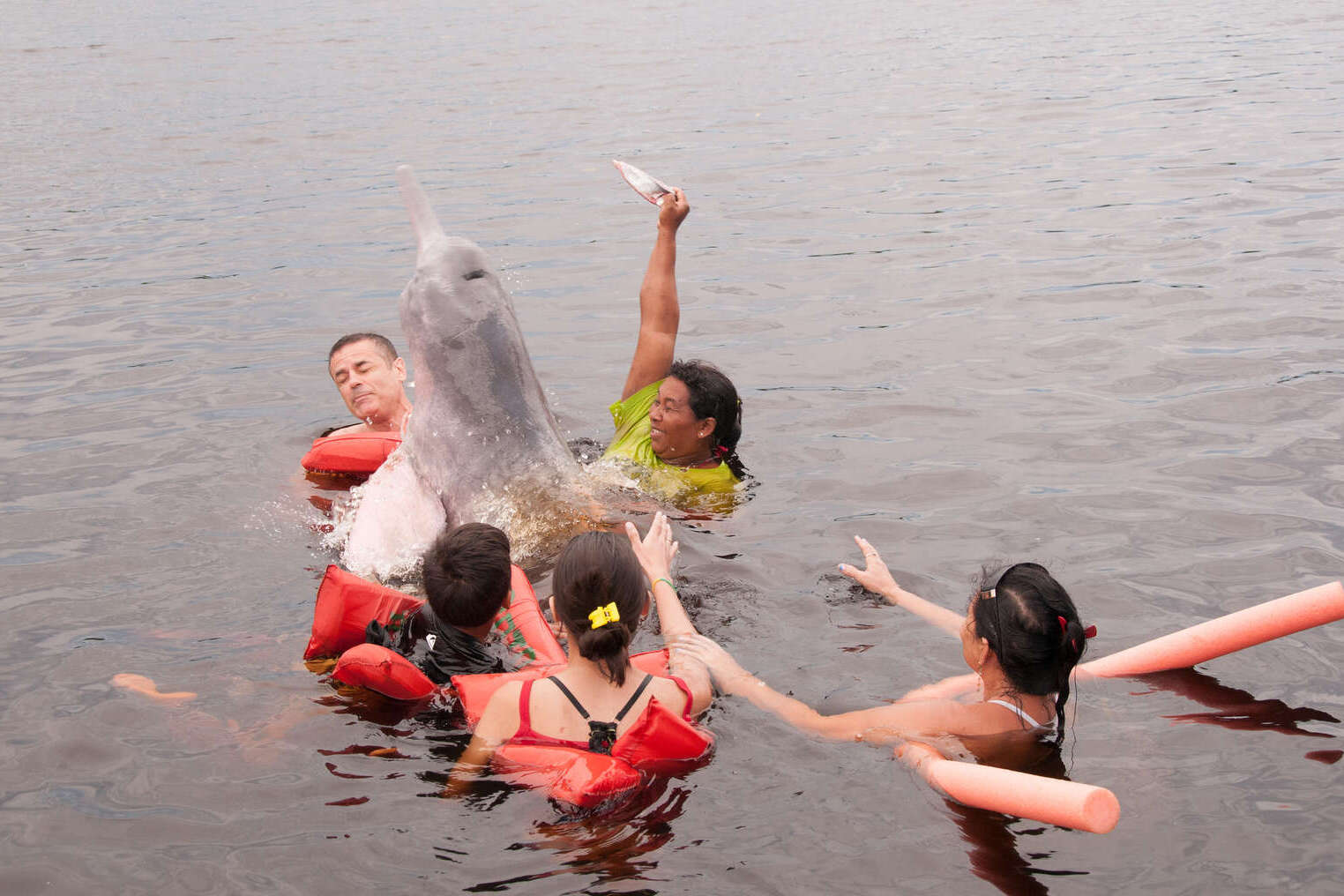
In general, biologists consider it inadvisable to interact with wild animals. This applies to all animal species, including river dolphins.
However, this activity poses no major risk to the animals if, and only if, it is carried out in a way that is safe for both dolphins and humans.
- The dolphins must not have been lured by food or other bait.
- Their freedom of movement must be total.
- They must have complete freedom to interact with swimmers.
- The activity must be carried out in an environment protected from any potential dangers from other species (Anacondas, Caimans, Piranha…) or strong currents.
- Approach rules must be respected by all boats.
What to do in the event of a problem
Do nothesitate to speak to your guide before the activity, and if you feel that these rules are not being taken seriously, do not take part in the activity. If you witness irresponsible behavior during the activity, speak up and report the problem to the people in charge.
As travelers, we also have a role to play in changing behavior.
Contacts to see pink river dolphins in Colombia
Where to see river dolphins in Colombia
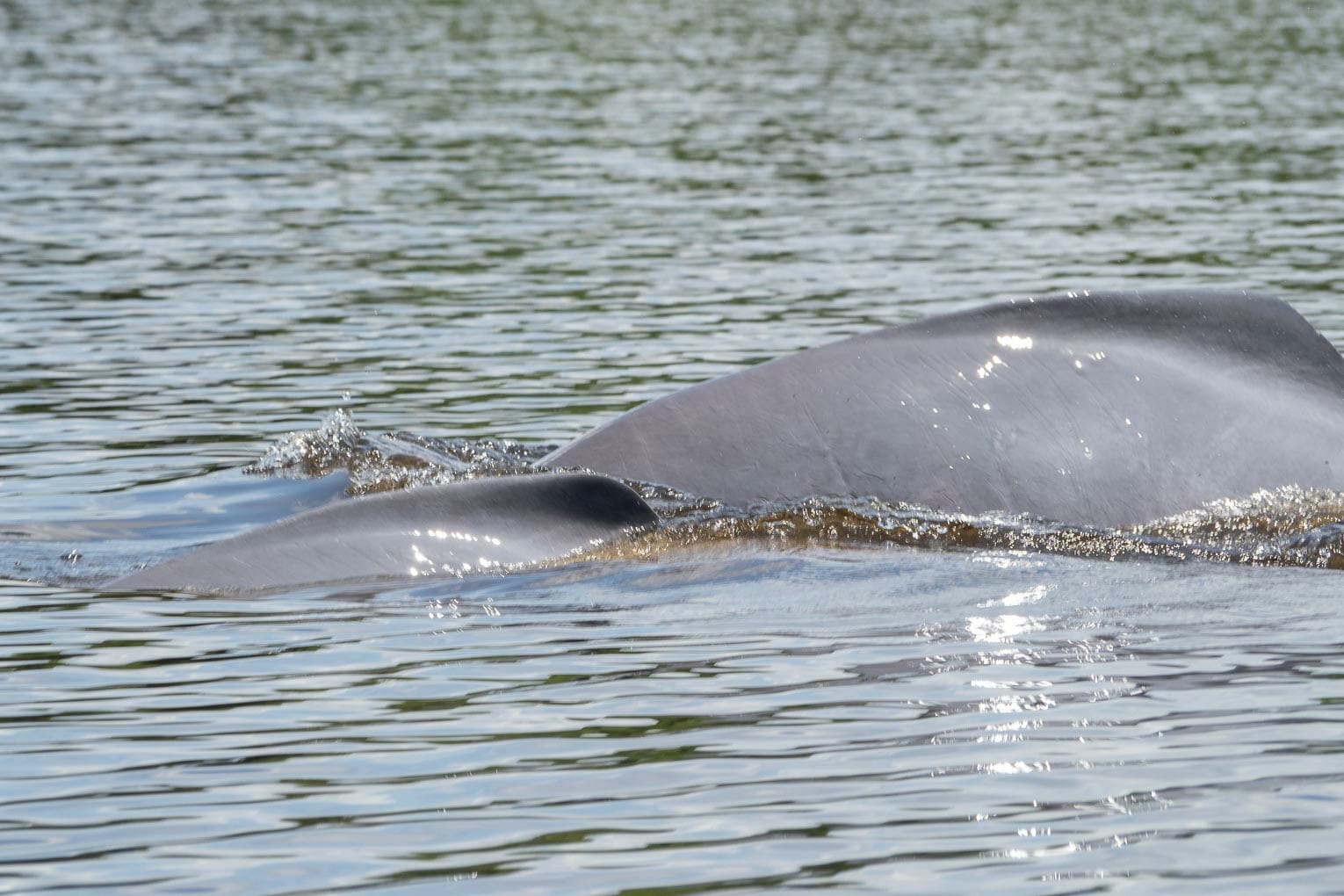
We currently have two contacts with local agencies offering travelers the chance to swim with pink Amazonian dolphins in Colombia.
Seeing pink river dolphins in Puerto Nariño (Amazonia)
Puerto Nariño and the Tarapopo lakes are the best places to see pink dolphins in the Amazon.
Watching pink river dolphins in the Guaviare
We had the chance tointeract with pink dolphins in a lake a few hours from San José del Guaviare. The experience was also an opportunity to meet the people behind this community-based tourism project, which is part of a government program to convert illicit coca crops.

